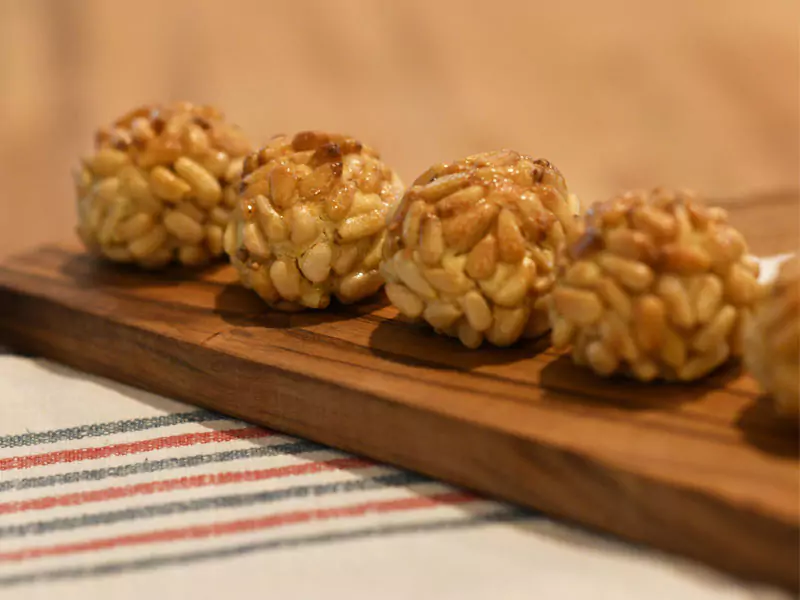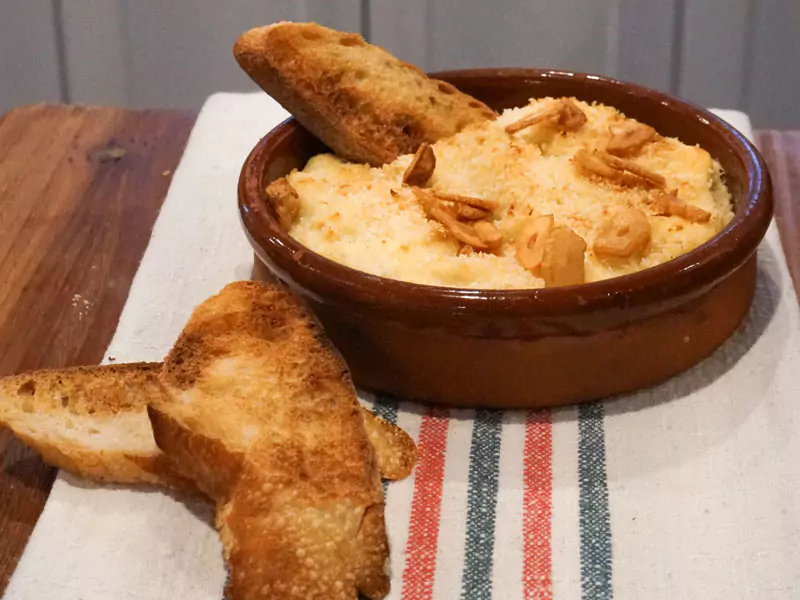Torró d’Agramunt
In Catalonia, nougat, or torró, is synonymous with Christmas—a Christmas without torrons is well-nigh inconceivable. Catalan nougat is most often rectangular in shape and contains nuts, honey, coconut, candied fruit, caramelized yolk, chocolate, etc. It is traditionally eaten after midnight on Christmas Eve and on Christmas Day.
NOTE FROM HISTORY:
While we don’t know exactly where nougat came from, it’s safe to say that the first recipes for hazelnut nougat appeared in Catalan culinary treatises. Today’s recipes follow the same method, which has been passed down from generation to generation. The following recipe is for hazelnut nougat from Agramunt and Amer, two towns known for their Christmas sweets.
In the nineteenth century, it was tradition to go to the market for torrons on Christmas morning. Valencian nougat-makers would fill up the market stalls with their varieties from Xixona and Alacant. Catalan nougat-makers from Agramunt grew furious at their invasion, and would dress up in traditional attire, including short, velvet pants and traditional Catalan hats, so that customers could identify them. They would often compete over who made the best hazelnut nougat.
AGRAMUNT NOUGAT
These nougat rounds are made with hazelnuts or whole almonds, honey, sugar, and egg white, then covered in thin wafers. Versions are ranked as “supreme” or “extra” depending on how many hazelnuts they contain.
TRADITIONS
CHRISTMAS TIÓ
On Christmas Eve, Catalans gather around the fire after dinner to watch a special wooden log poop treats. The rite is deeply rooted in Catalan popular liturgy for Christmas Eve night. Families put a blanket-covered log, called a tió, on the floor and the children beat it with a stick while singing the popular song “Caga Tío.” Before hitting the log, children would traditionally have to recite the Lord’s Prayer three times in front of the image of the Saint they had at home. Nowadays, they need only sing or tell a story while their parents hide sweets and small gifts underneath the blanket.
This rite is repeated until parents replace the sweets with lumps of “coal” made of sugar, which lets the children know the log won’t poop out any more gifts. In the past, once the ceremony ended, they would slowly burn the log in the fireplace, attempting to make it last until Three Kings Day (January 6). If it burned up before then, it meant that the following year would be full of hardships, so parents would wet the log every now and again so that it didn’t burn too quickly.



